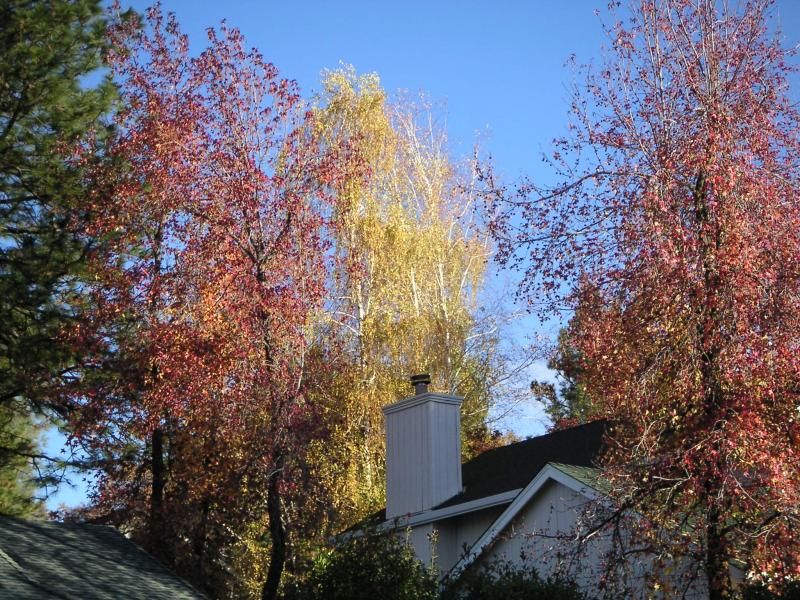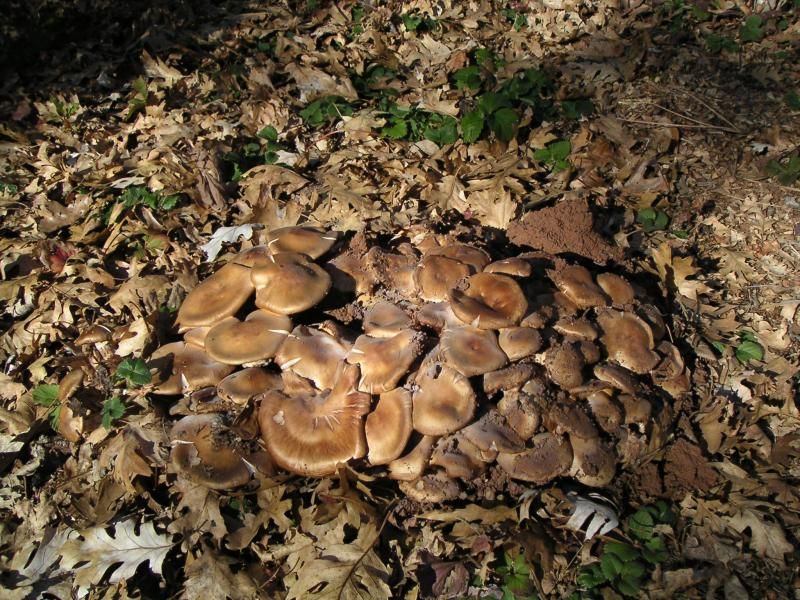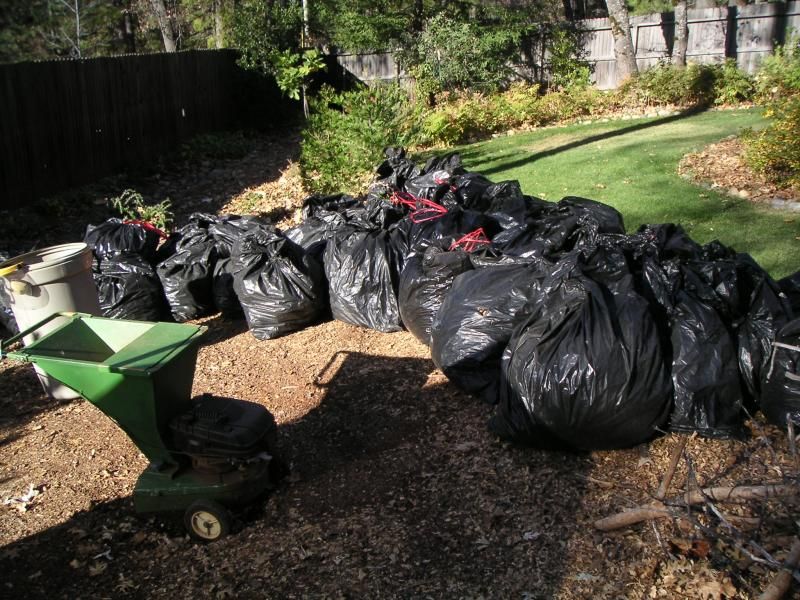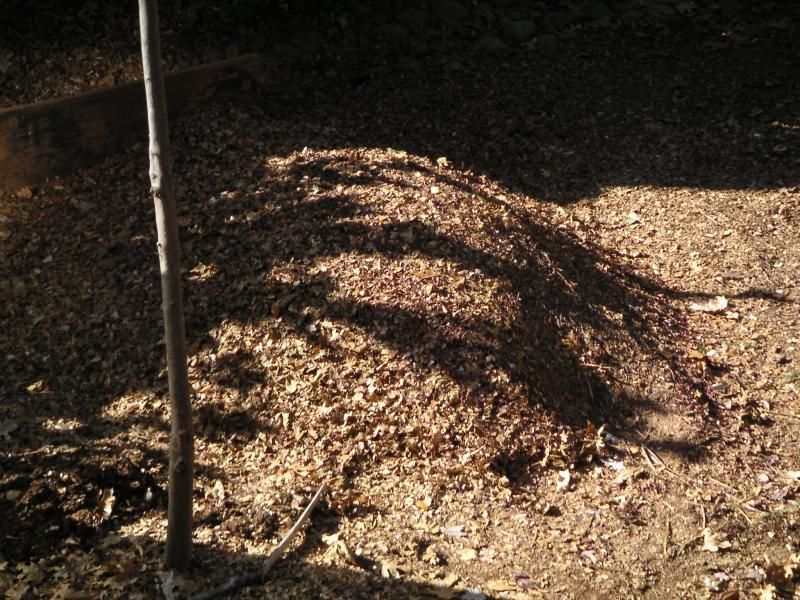 |
| Fire Maples, a few days ago, before the gales hit. |
Leaves are mostly done falling here in the Foothills. There's still some up, but the periods of gale and now cold have dropped many many leaves. You can fill big plastic yard waste bags with leaves and pay to have them hauled off or you can pay someone to do it for you or you can do what we do. Use a leaf grinder. Its a box with an engine and blades, like a lawnmower with metal parts to keep your stupid hands out of the blades and you dump the leaves into a funnel and leaf chips come out the side. Most of the chips are around half inch diameter so this helps it break down into the soil much faster, in weeks rather than months.
Normally, you spread this mulch on bare soil to slow or stop erosion, though you can till it in if you rent or own a rototiller and your soil allows for that. In California, rototillers can be destroyed by our hard clay soil, though once that soil is broken up and aerated, it will grow anything you plant. Its not coincidence that Idaho baking potatoes were developed here in California, in my home town. The weather and soil meant you could grow anything, provided it wasn't killed by frost. I even knew people who had orange trees, and date palms were common there. Up here its mostly apples and cherry trees, both sweet and pie making sour cherries. Slightly lower elevation are mandarin oranges, with almonds and walnuts on the Sacramento Valley floor, along with apricots. Local orchard coops buy the fruits and nuts and process them in small local factories, often for winter holiday gift basket sales.
Soils are only crap if they aren't cared for, or some jackass tilled sawdust into it. Sawdust is hard to fix. 12 times normal nitrogen fertilizer is usually needed. As that's uncontaminated with parasites, unlike manure, pellet fertilizer is best. If you put physical effort into amending them to where you want them, usually by adding things and tiling them for proper aeration, and planting nitrogen fixing cover crops, like beans or clover, and till in organic matter so plants have something to grow with, like mulched leaves, you aren't throwing away the summer's efforts (and paying someone to haul it somewhere else). The CO2, which many people are obsessed about, stays in solid format and goes back into the soil to grow more leaves next spring.
 |
| These mushrooms erupted in a single day from the remains of a dead oak tree's roots. |
 |
| 24 bags of leaves = 40 minutes of grinding |
Despite looking pretty non-descript, this is what 24 bags of leaves actually turns into after shredding. Its about 12 feet long, 8 feet wide, and 2 feet high. This will cover a fair bit of dirt and vanish into the soil in a few weeks, providing nutrients. And due to the oak leaf tannins will make the azaleas grow extra well. They like acid soils. I hope everyone has a nice Thanksgiving. My ancestors were there, at the first Thanksgiving. On both sides of the table. That's America.

No comments:
Post a Comment